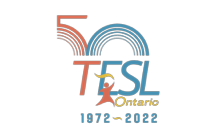Teaching English online has become all the rage in recent years. Students are quickly grasping at the opportunity to learn from the comfort of their own home, often one-on-one with a teacher across the world.
Online ESL companies are popping up left and right across the world, leaving many teachers tempted by the ease of transitioning to this type of career. However, the inability to be tactile (or the perception of such) can quickly negate any and all positives that can come from an online lesson.
One fool-proof way to combat this is to incorporate Total Physical Response (TPR) into as much of the lesson as possible, especially with young children and beginners.
Read: How to Get Started as An Online ESL Teacher
What is Total Physical Response?
Total Physical Response is a language teaching method that was developed in the late 1970s. Observations of students learning a language led to this method’s development, which functions on three key principles:
1) language is learned primarily through listening,
2) the right hemisphere of the brain, (controlling creativity and insight) must be engaged,
3) learning must be free from stress.
Using these principles, teaching while utilizing Total Physical Response involves coupling language input with specific full-body movement output, all in a relaxed environment.
Save with OnTESOL Online TESOL Certificate
Total Physical Response is a fairly simple concept that can be applied to most lessons. However, it is more applicable and effective when teaching basic language to beginner learners. Although generating verbal output from the student is always awesome, you don’t necessarily need to demand it from early-stage learners. Eliciting physical responses from them works wonders for language development and retention, so be sure to be consistent with Total Physical Response in those situations.
As the vocabulary and grammar level progresses, TPR becomes much more challenging. Trying to essentially “act out” a complex sentence or figurative language (i.e. an idiom) like “Time to hit the road” would not only be ineffective: it would be insanely confusing for the student.
Benefits of TPR for Online ESL Teachers and Students
While Total Physical Response is definitely utilized by in-classroom teachers around the world, it is particularly important when teaching online. Many online teachers (especially newbies) find the lack of physical interaction intimidating. It is far easier to stimulate and engage students with a physical presence in a classroom. However, if TPR is applied properly, you can extract the same amount of energy and engagement in the online
classroom.
Try not to think of the computer screen as a barricade! Many of the actions, cues, and positive reinforcements that you are able to give in person can still be used in an online setting- think high fives, acting out simple verbs, etc. In fact, some of them might even be more effective online, especially if you are teaching one-to-one.
Total Physical Response is a great element to add to beginner lessons with students who aren’t yet capable of producing spoken language. Associating gestures (like holding up binoculars to indicate that you want the student to look for/find something or cupping your ear for “listen”) with commands and/or questions allows the student to use context clues to form memorable speech, as opposed to hearing a string of three to four incomprehensible words. I think it’s the best technique to use for vocabulary recall- especially when compared to the traditional flashcard method.
Using these techniques can be effective regardless of class size, as well. No matter the circumstances of the lesson, using TPR creates a fun, low stressed environment that allows students to burn energy and learn more efficiently by actively participating in class.
Watch this video on Total Physical Response!
Related Articles
How to Use the Communicative Approach






